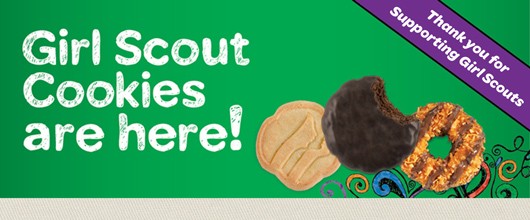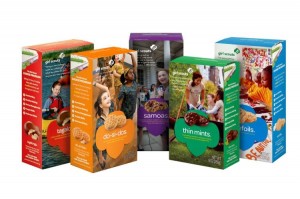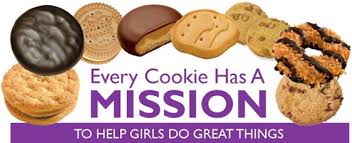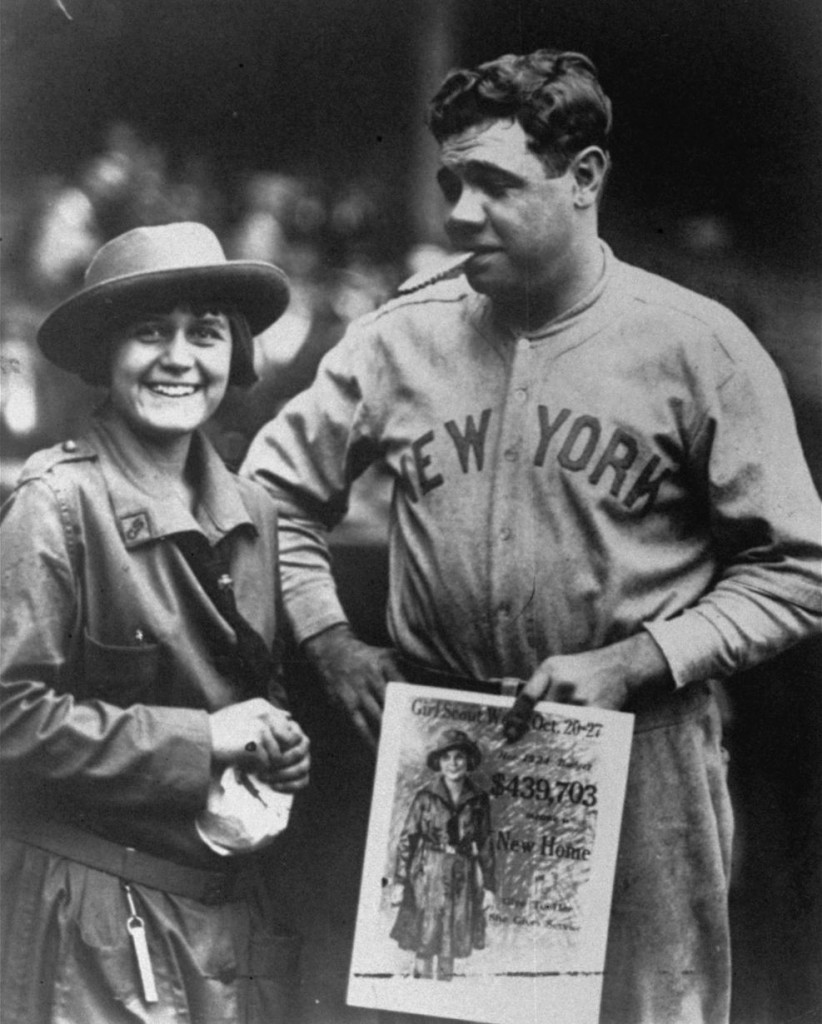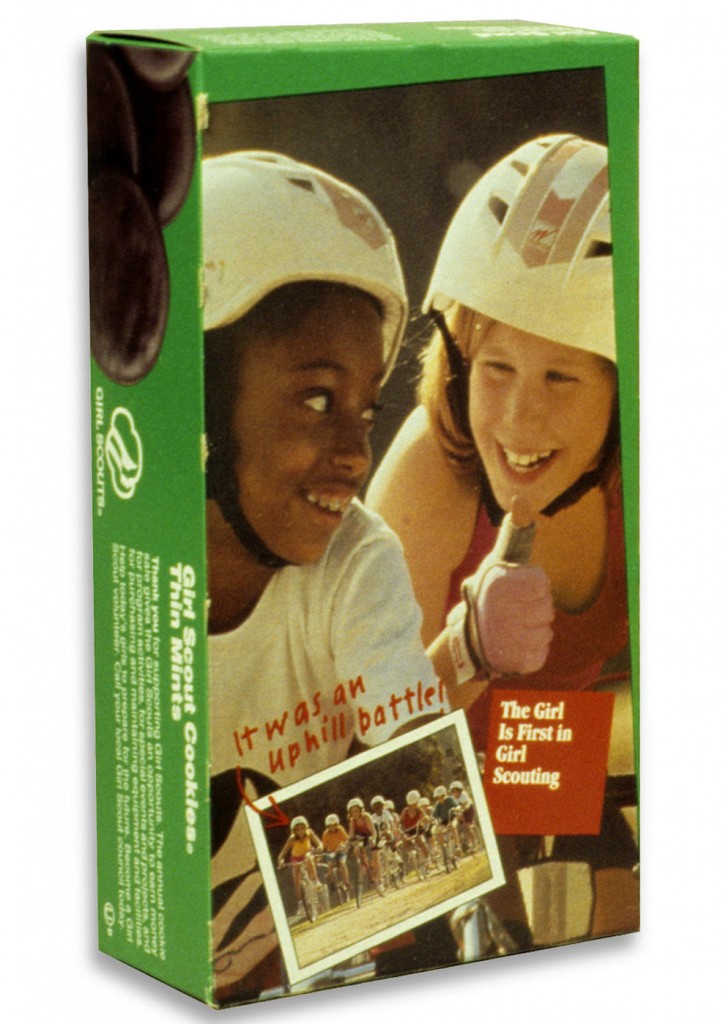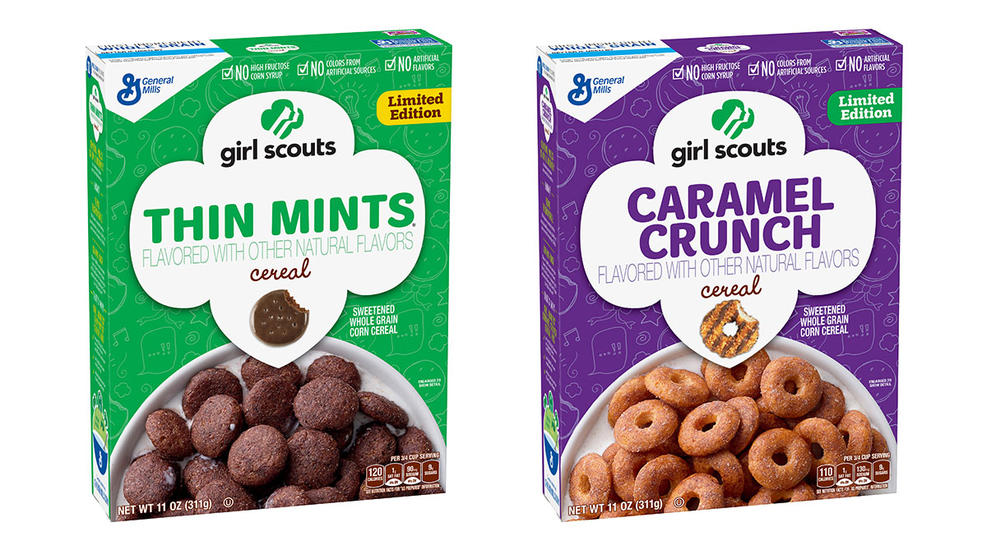Girl Scout Cookie season runs Jan. 28 through March 11.
In 1917, the girls of Mistletoe Troop in Muskogee, Oklahoma, decided to fund their troop’s projects with the proceeds of cookies they made at home.
The idea took off and now, Girl Scout cookies have served as fundraisers for bulletproof vests for police officers and care packages for children fighting cancer in troops’ communities, traveled as far as outer space with NASA, and are now even online!
Girl Scout Cookies, an icon of American culture, celebrates its 100th anniversary this month. Take a look at how the organization and its cookies have grown since its founding in 1912.
Pictured here: Juliette Gordon Low founded the U.S. Girl Scout movement on March 12, 1912. She officially registered the organization’s first 18 girl members in Savannah, Georgia.
The cookies began selling in 1917.

Property of the National Historic Preservation Center, Girl Scouts of the USA
In the 1920s and 1930s, Girl Scouts started to bake sugar cookies with their mothers.
Cookies in the 1920s and 1930s were sold door to door for 25 to 35 cents per dozen, according to the Girl Scouts website.
The Babe! Baseball player Babe Ruth holds a Girl Scout cookie in his mouth during a promotion for the scout’s Annual Cookie Sale in 1923.
By 1937, more than 125 Girl Scout councils reported holding cookie sales, according to the Girl Scouts website.
Celebrating the 30th anniversary of girl scouting and the opening of their cookie sale, two Girl Scouts present a box of cookies to Eleanor Roosevelt at the White House, March 12, 1942, in Washington.
Eleanor Roosevelt gazes from the Girl Scout War Bond poster to a Girl Scout at a volunteer leadership dinner in 1943. In the 1940s, Girl Scouts started to sell calendars instead of cookies due to sugar, flour and butter shortages. After WWII, cookie sales picked up and by 1948, 29 bakers were licensed to bake Girl Scout cookies.
In 1951, Girl Scouts were sold in three varieties: Peanut Butter Sandwich, Shortbread, and Chocolate Mints (known today as Thin Mints). The cookies were starting to sell at tables in shopping malls.
In the 1960s, Baby Boomers increased the amount of the Girl Scouts, which boosted cookie sales. The best sellers in 1966 were Chocolate Mint (known today as Thin Mints), Shortbread and Peanut Butter Sandwich cookies, notes the Girl Scouts website.
Three Girl Scouts selling boxes of cookies to a fireman in 1970. Cookies for sale during the 1970s included Thin Mints, Peanut Butter Sandwich/Do-si-dos and Shortbread/Trefoils cookies, along with four other choices.
In the 1980s, cookie boxes depicted Girl Scouts in action to celebrate Earth Day and taking care of the environment.
In the 1990s, eight cookie varieties were available. Low-fat and sugar-free selections did not sell well, so Girl Scouts discontinued producing it.
Former President Ronald Reagan looks at his 87th birthday present of Girl Scout cookies, presented to him by the Tres Condados Girl Scout Troop on Feb. 6, 1998 at his offices in Los Angeles.
Seven-year-old twins set up a Girl Scout cookie sales table in New York’s Empire State Building in 1998. Fresh from a sales-training seminar, the girls were turning cookies into dough fast in the lobby of the landmark building.
In fall 2000, Girl Scouts redesigned its boxes to be brighter. Two licensed bakers produced a maximum of eight varieties, including three mandatory ones: Thin Mints, Peanut Butter Sandwich/Do-si-dos and Shortbread/Trefoils. All cookies produced became kosher.
Girl Scouts from the Texas Council sell cookies in Dallas. In 2007, the Girl Scouts marked their 90th year in the cookie business by getting most of the artificial fat out of all varieties of their iconic treats, which had been under attack by a few health-focused consumer groups.
Girl Scouts ring a doorbell of a home in 2008 in Las Cruces, N.M.
Pastry chef Ernie Rich applies the finishing touches to the largest chocolate and vanilla Girl Scout cookie ever made during an event at the National Constitution Center in Philadelphia in 2009.
In March 2011, Girl Scouts in Ohio were the first in the nation to start using GoPayment, a machine that attaches to smartphones to accept credit card payment for the cookies.
In 2013, Girl Scouts lined up for a chance to star in a Coffee-Mate commercial to promote its new Girl Scout cookie inspired creamers in Los Angeles.
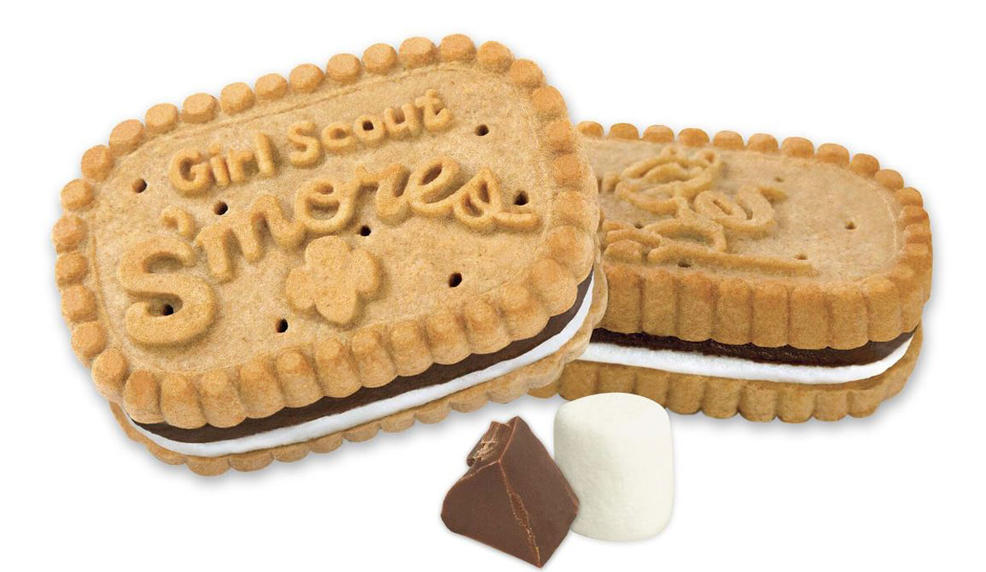
Girl Scouts of Northeast Texas

